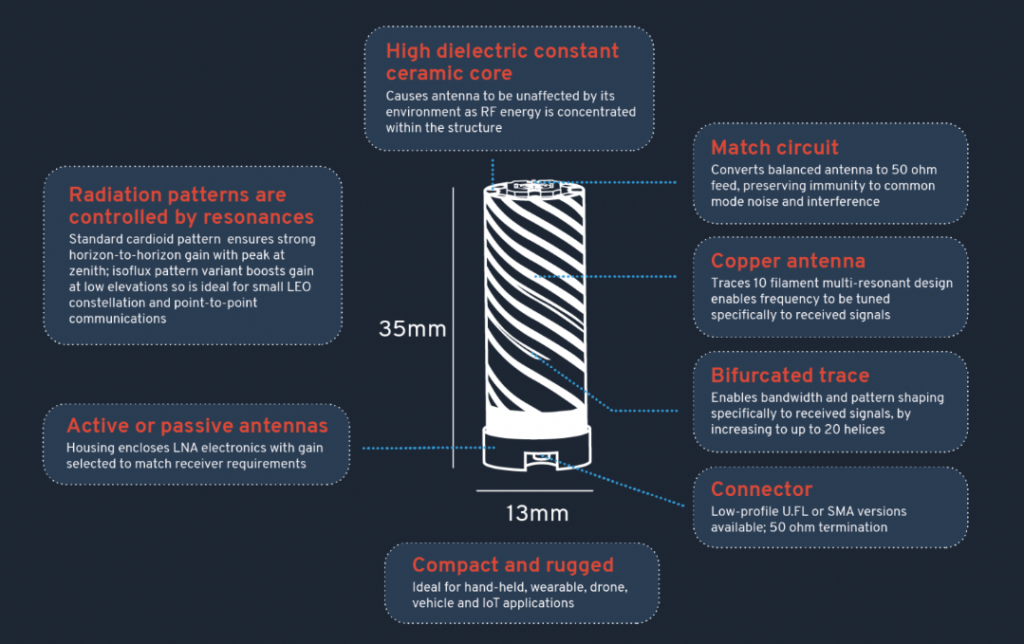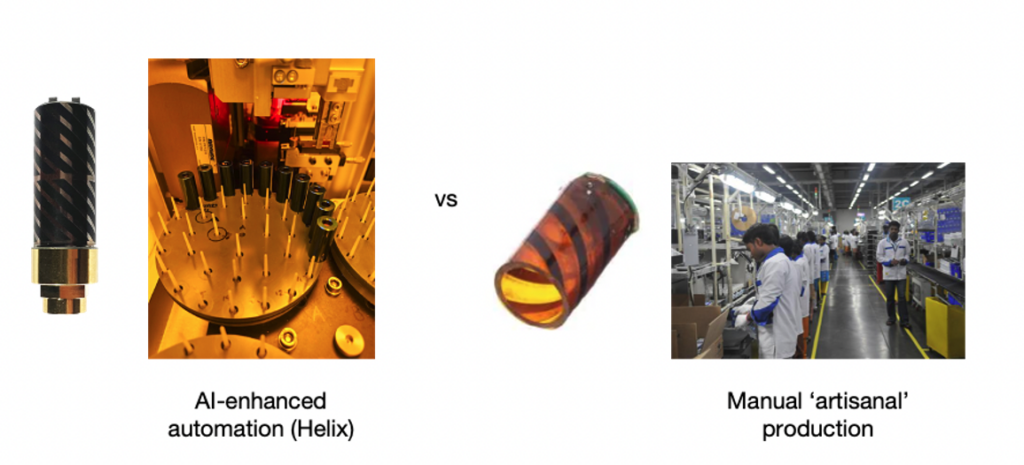Where next in Generative AI’s evolution?
Introduction The global economy is fuelled by knowledge and information, the digital sector growing 6x […]
Global Navigation Satellite Systems (GNSS) such as GPS, Galileo, GLONASS and BeiDou are constellations of satellites that transmit positioning and timing data. This data is used across an ever-widening set of consumer and commercial applications ranging from precision mapping, navigation and logistics (aerial, ground and maritime) to enable autonomous unmanned flight and driving. Such data is also fundamental to critical infrastructure through the provision of precise time (UTC) for synchronisation of telecoms, power grids, the internet and financial networks.
Whilst simple SatNav applications can be met with relatively cheap single-band GNSS receivers and patch antennas in smartphones, their positioning accuracy is limited to ~5m. Much more commercial value can be unlocked by increasing the accuracy to cm-level, thereby enabling new applications such as high precision agriculture and by improving resilience in the face of multi-path interference or poor satellite visibility to increase availability. Advanced Driver Assistance Systems (ADAS), in particular, are dependent on high precision to assist in actions such as changing lanes. And in the case of Unmanned Aerial Vehicles (UAVs) aka drones, especially those operating beyond visual line of sight (BVLoS), GNSS accuracy and resilience are equally mission critical.
GNSS receivers need unobstructed line-of-sight to at least four satellites to generate a location fix, and even more for cm-level positioning. Buildings, bridges and trees can either block signals or cause multi-path interference thereby forcing the receiver to fallback to less-precise GNSS modes and may even lead to complete loss of signal tracking and positioning. Having access to more signals by utilising multiple GNSS bands and/or more than one GNSS constellation can make a big difference in reducing position acquisition time and improving accuracy.

Source: https://www.mdpi.com/1424-8220/22/9/3384
Interference in the form of jamming and spoofing can be generated intentionally by bad actors, and is a growing threat. In the case of UAVs, malicious interference to jam the GNSS receiver can force the UAV to land; whilst GNSS spoofing, in which a fake signal is generated to offset the measured position, directs the UAV off its planned course to another location; the intent being to hijack the payload.
The sophistication of such attacks has historically been limited to military scenarios and been mitigated by expensive protection systems. But with the growing availability of cheap and powerful software defined radio (SDR) equipment, civil applications and critical infrastructure reliant on precise timing are equally becoming vulnerable to such attacks. As such, being able to determine the direction of incoming signals and reject those not originating from the GNSS satellites is an emerging challenge.
GNSS signals are extremely weak, and can be as low as 1/1000th of the thermal noise. Therefore, the performance of the antenna being first in the signal processing chain, is of paramount importance to achieving high signal fidelity. This is even more important where the aim is to employ phase measurements of the carrier signal to further increase GNSS accuracy.
However, more often than not the importance of the antenna is overlooked or compromised by cost pressures, often resulting in the use of simple patch antennas. This is a mistake, as doing so dramatically increases the demands on the GNSS receiver, resulting in higher power consumption and lower performance.
In comparison to patch antennas, a balanced helical design with its circular polarisation is capable of delivering much higher signal quality and with superior rejection of multi-path interference and common mode noise. These factors, combined with the design’s independence of ground plane effects, results in a superior antenna plus an ability to employ carrier phase measurements resulting in positional accuracy down to 10cm or better. This is simply not possible with patch antennas in typical scenarios such as on a metal vehicle roof or a drone’s wing.

Size is also becoming a key issue – as GNSS becomes increasingly employed across a variety of consumer and commercial applications, there is growing demand to miniaturise GNSS receivers. Consequently, Size, Weight and Power (SWAP-C) are becoming the key factors for the system designer, as well as cost.
UAV GNSS receivers, for example, often need to employ multiple antennas to accurately determine position and heading, and support multi-band/multi-constellation to improve resiliency. But in parallel they face size and weight constraints, plus the antennas must be deployed in close proximity without suffering from near-field coupling effects or in-band interference from nearby high-speed digital electronics on the UAV. As drones get smaller (e.g. quadcopter delivery or survey drones) the SWAP-C challenge only increases further.
Aesthetics also comes into play – very similar to the mobile phone evolution from whip-lash antenna to highly integrated smartphone, the industrial designer is increasingly influencing the end design of GNSS equipment. This influence places further challenges on the RF design and particularly where design aesthetics require the antenna to be placed inside an enclosure.
Optimal GNSS performance is achieved through the use of ceramic cores within the helical antenna. However doing so raises a number of manufacturing yield challenges. As a result of material and dimensional tolerances, the cores have a “relative dielectric mass” and so the resonance frequency can vary between units. This can lead to excessive binning in order to deliver antennas that meet the final desired RF performance. Production yield could be improved with high precision machining and tuning, but such an approach results in significantly higher production costs.
Many helical antenna manufacturers have therefore limited their designs to using air-cores to simplify production, whereby each antenna is 2D printed and folded into the 3D form of a helical antenna. This is then manually soldered and tuned, an approach which could be considered ‘artisanal’ by modern manufacturing standards. This also results in an antenna that is larger, less mechanically robust, and more expensive, and generally less performant in diverse usage scenarios.

Helix Geospace excels in meeting these market needs with its 3D printed helical antennas using novel ceramics to deliver a much smaller form factor that is also electrically small thereby mitigating coupling issues. The ceramic dielectric loaded design delivers a much tighter phase centre for precise position measurements and provides a consistent radiation pattern to ensure signal fidelity and stability regardless of the satellites’ position relative to the antenna and its surroundings.
In Helix’s case, they overcome the ‘artisanal’ challenge of manufacturing through the development of an AI-driven 3D manufacturing process which automatically assesses the material variances of each ceramic core. The adaptive technology compensates by altering the helical pattern that is printed onto it, thereby enabling the production of high-performing helical antennas at volume.

This proprietary technique makes it possible to produce complex multi-band GNSS antennas on a single common dielectric core – multi-band antennas are increasingly in demand as designers seek to produce universal GNSS receiver systems for global markets. The ability to produce multi-band antennas is transformative, enabling a marginal cost of production that meets the high performance requirements of the market, but at a price point that opens up the use of helical antennas to a much wider range of price sensitive consumer and commercial applications.
As end-users and industry seek higher degrees of automation, there is growing pressure on GNSS receiver systems to evolve towards cm-level accuracy whilst maintaining high levels of resiliency, and in form factors small and light enough for widespread adoption.
By innovating in its manufacturing process, Helix is able to meet this demand with GNSS antennas that deliver a high level of performance and resilience at a price point that unlocks the widest range of consumer and commercial opportunities be that small & high precision antennas for portable applications, making cm-level accuracy a possibility within ADAS solutions, or miniaturised anti-jamming CRPA arrays suitable for mission critical UAVs as small as quadcopters (or smaller!).

Introduction The global economy is fuelled by knowledge and information, the digital sector growing 6x […]

A summary of the innovation on show at this year’s Hello Tomorrow.